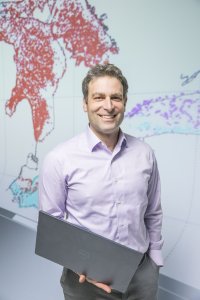Presented By: Cooperative Institute for Great Lakes Research (CIGLR)
Great Lakes Seminar Series: Matthew Hoffman
Modeling the Fate and Transport of Plastic Pollution Using Great Lakes Hydrodynamic Models and Exploring the Potential Impact of Data Assimilation

About the presentation: Understanding the transport and fate of plastic pollution is crucial for modeling the exposure risk for different ecosystems and organisms. I will discuss efforts to model the transport of plastic pollution in the Great Lakes using NOAA’s operational hydrodynamics models and custom built transport code to simulate changing particle properties. The models allow for advection, turbulent mixing in the vertical, density driven sinking, beaching, deposition, and biofouling of particles. The transport model relies on accurant hydrodynamic fields, so I will also describe initial efforts to perform data assimilation on the NOAA model output using a Local Ensemble Transform Kalman Filter (LETKF) approach on the FVCOM model of Lake Erie. We test the LETKF using simulated observations of surface temperature and vertical profiles of temperature.
About the speaker: Matthew J. Hoffman is a Professor in the School of Mathematics and Statistics at the Rochester Institute of Technology. Dr. Hoffman received the B.A. degree in Mathematics and Astrophysics from Williams College, Williamstown, MA, USA and M.S. and Ph.D. degrees in Applied Mathematics and Scientific Computation from the University of Maryland, College Park, MD, USA. He was a post-doctoral fellow in the Earth and Planetary Science Department at Johns Hopkins University, Baltimore, MD, USA , where he worked on data assimilation for the Chesapeake Bay. Since moving to RIT, he has shifted his focus to the Great Lakes, including some work on data assimilation on the NOAA forecast model for Lake Erie. Over the past decade, his work has focused on modeling the input, transport, and fate of plastic pollution in fresh water, including the Great Lakes.
About the speaker: Matthew J. Hoffman is a Professor in the School of Mathematics and Statistics at the Rochester Institute of Technology. Dr. Hoffman received the B.A. degree in Mathematics and Astrophysics from Williams College, Williamstown, MA, USA and M.S. and Ph.D. degrees in Applied Mathematics and Scientific Computation from the University of Maryland, College Park, MD, USA. He was a post-doctoral fellow in the Earth and Planetary Science Department at Johns Hopkins University, Baltimore, MD, USA , where he worked on data assimilation for the Chesapeake Bay. Since moving to RIT, he has shifted his focus to the Great Lakes, including some work on data assimilation on the NOAA forecast model for Lake Erie. Over the past decade, his work has focused on modeling the input, transport, and fate of plastic pollution in fresh water, including the Great Lakes.